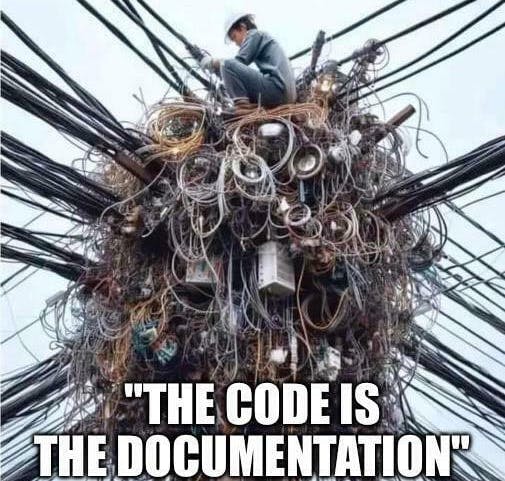Large language models are powerful, but they are also unpredictable.
They might generate long explanations when you expect a summary, skip fields in a JSON output, or change the format completely from one request to another.
When you are building an AI application that depends on structured responses, these small errors can cause big failures.
That is where Pydantic comes in.
Pydantic lets you define exact data shapes for both inputs and outputs of your AI system. By using it to validate model responses, you can catch inconsistencies, auto-correct some of them, and make your entire LLM workflow far more reliable.
This article walks through how you can use Pydantic to keep your language model outputs predictable, even when the model itself is not.
What we will cover in this article
- The problem with unpredictable LLM outputs
- What is Pydantic
- Validating model responses
- How Pydantic makes AI apps safer
- Using Pydantic to enforce AI response structure
- Adding Pydantic validation in LLM frameworks
- Real-world use cases
- Conclusion
The problem with unpredictable LLM outputs
Imagine you are building an AI app that generates summaries of product reviews. You ask the model to return a structured JSON with two fields: summary and sentiment.
Your prompt looks like this: n “Summarize this review and return a JSON with keys ‘summary’ and ‘sentiment’.”
Most of the time, it works. But sometimes, the model adds extra text around the JSON, forgets a key, or outputs the wrong type.
For example: n {"summary": "Good build quality", "sentiment": "positive"} n is perfect. But sometimes you get n Sure, here you go! {"summary": "Too expensive but works well"} n or n {"summary": "Nice camera", "sentiment": 5}
You could try to fix this with string parsing, but it gets messy fast. Instead, you can define a strict schema using Pydantic and make sure only valid responses are accepted.
What is Pydantic?
Pydantic is a Python library that lets you define data models using simple classes. It automatically validates data types and structures when you create a model instance.
If something is missing or incorrect, Pydantic raises an error, helping you identify problems early.
A basic example looks like this:
from pydantic import BaseModel
class ReviewSummary(BaseModel):
summary: str
sentiment: str
data = {"summary": "Nice screen", "sentiment": "positive"}
result = ReviewSummary(**data)
print(result)
If you try passing an integer where a string is expected, Pydantic raises a clear validation error. This is the exact mechanism we can use to validate LLM outputs.
Validating model responses
Let’s connect this idea with a real LLM response. Suppose you are using OpenAI’s API. You can ask the model to return structured data and then validate it using Pydantic.
import json
from pydantic import BaseModel, ValidationError
from openai import OpenAI
client = OpenAI()
class ReviewSummary(BaseModel):
summary: str
sentiment: str
prompt = "Summarize this review and return JSON with keys: summary, sentiment.nnReview: The phone is fast but battery drains quickly."
response = client.responses.create(
model="gpt-4o-mini",
input=prompt
)
raw_text = response.output_text
try:
parsed = json.loads(raw_text)
validated = ReviewSummary(**parsed)
print(validated)
except (json.JSONDecodeError, ValidationError) as e:
print("Validation failed:", e)
Here, the model’s response goes through two stages.
First, it is parsed from text into JSON. Then Pydantic checks if it matches the expected schema. If something is missing, it throws an error. You can catch that and decide how to handle it.
How Pydantic makes AI apps safer
LLMs are probabilistic. Even with perfect prompts, you can never guarantee that they will follow your structure every time.
Using Pydantic adds a deterministic layer on top of that uncertainty. It acts as a contract between your app and the model.
Every response must follow that contract. If it doesn’t, your system can immediately detect it, reject it, or retry with a clearer prompt.
This is especially important for production-grade AI apps where unpredictable responses can break user flows, crash APIs, or corrupt data in a database.
By validating outputs, you gain three big benefits: predictable data formats, clear error handling, and safer downstream processing.
Using Pydantic to enforce AI response structure
You can also use Pydantic in more complex workflows. Let’s say your model generates structured answers for a chatbot that needs multiple fields: an answer, a confidence score, and suggested follow-up questions.
from typing import List
from pydantic import BaseModel, Field
class ChatResponse(BaseModel):
answer: str
confidence: float = Field(ge=0, le=1)
follow_ups: List[str]
Now your model must return something like:
{
"answer": "You can enable dark mode in settings.",
"confidence": 0.92,
"follow_ups": ["How to change wallpaper?", "Can I set auto dark mode?"]
}
If the model outputs invalid data, such as a missing key or a negative confidence score, Pydantic instantly flags it.
You can then log the error, retry with a system message, or replace missing data with defaults.
Adding Pydantic validation in LLM frameworks
Frameworks like LangChain and FastAPI work smoothly with Pydantic.
In LangChain, you can define tool or agent schemas using Pydantic classes to ensure all interactions between the model and tools are consistent.
For example:
from langchain.tools import StructuredTool
tool = StructuredTool.from_function(
func=lambda x: x * 2,
args_schema=PydanticModel,
description="Doubles the input number"
)
In FastAPI, every endpoint can accept and return Pydantic models. This makes it perfect for AI APIs where model responses are validated automatically before being sent to clients.
Improving LLM reliability through feedback
When you start validating outputs, you will quickly notice patterns in how your LLM fails. Sometimes it adds extra commentary, sometimes it confuses key names.
Instead of manually fixing those each time, you can feed this information back into your prompts or fine-tuning data.
For example, if the model keeps writing sentiments instead of sentiment, add a correction instruction to your system prompt. Over time, validation errors will drop, and the model will learn to comply with your structure more consistently.
Real-world use cases
Developers use Pydantic validation in many AI systems.
In AI chatbots, it ensures consistent message formatting and confidence scores. In summarization systems, it validates that each summary includes key fields like title, tone, or keywords. In AI-driven APIs, it acts as a guardrail that stops invalid data from propagating downstream.
This is especially useful in retrieval-augmented generation (RAG) pipelines, where structured outputs such as document scores or entities are crucial for maintaining accurate context.
Conclusion
Pydantic brings structure to the chaos of LLM outputs. It turns unpredictable text generation into predictable, schema-checked data. By validating model responses, you make your AI workflows reliable, debuggable, and safe for production.
The combination of LLM flexibility and Pydantic’s strict typing is powerful. You get the creativity of language models with the control of data validation.
When every output follows a schema, your AI becomes not just intelligent, but dependable.
Hope you enjoyed this article.
:::tip
Sign up for my free newsletter TuringTalks.ai for more hands-on tutorials on AI.
:::










